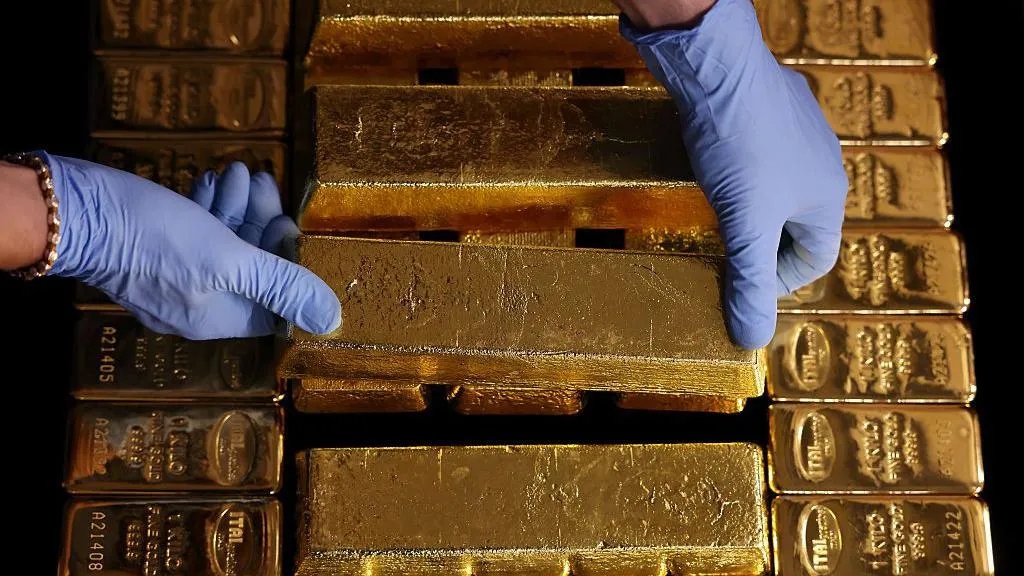Gold has surged to unprecedented levels, breaking through the $4000 per ounce barrier for the first time in history. This remarkable rally reflects heightened investor caution amid broad concerns over global economic instability, political turmoil, and a weakening US dollar. With gold’s value rising by more than a third since April, the precious metal has quickly become a focal point for investors seeking security in volatile markets.
Why Gold Prices Are Skyrocketing
The current gold bull run is fueled by a complex mix of market and geopolitical factors. The announcement of new US tariffs by President Donald Trump earlier this year sent shockwaves through international trade, prompting investors to flee riskier assets. Additional anxiety has been stoked by a protracted US government shutdown, now entering its second week, which has delayed the release of crucial economic indicators and undermined confidence in policymaking.
Historically, gold thrives in environments marked by uncertainty and unrest. Often hailed as a “safe haven,” gold tends to retain or increase its value when global equities and currencies stumble. As fears of a deeper downturn intensify, gold’s allure as a store of value has only grown stronger, making it the asset of choice for investors worldwide.
A Look Back: Comparing Past Gold Rallies
Analysts note that this is gold’s most significant rally since the 1970s. Traders remember that during previous US government shutdowns, like the month-long standoff in Trump’s first term, gold saw a rapid 4% uptick. Christopher Wong, a strategist at OCBC Bank in Singapore, highlights how political gridlock has consistently provided “tailwinds” for gold prices, and warns that even a swift resolution to the current shutdown could trigger a short-term drop in value. Nonetheless, investor appetite for hedging risk remains robust.
Central Banks and Retail Investors Drive Demand
While geopolitical turbulence is a major contributor, central banks have also played a pivotal role in fueling the contemporary gold rush. Since 2022, central banks across the world—including those of Poland, Turkey, India, Azerbaijan, and China—have collectively purchased over 1,000 tonnes of gold annually. This marks a stark increase from the yearly average of 481 tonnes accumulated between 2010 and 2021, reflecting a strategic pivot from US treasuries and dollar-denominated assets.
Retail investors are also seizing on gold’s momentum. Many, wary of escalating risks in stock markets crowded by overvalued tech firms, have turned to exchange-traded funds (ETFs) backed by gold, which have attracted a record $64 billion in flows this year alone. Storage providers like Silver Bullion report doubling customer numbers, with a mix of banks, individual investors, and wealthy families seeking secure vaults for their precious metal holdings.
Impact of US Dollar Weakness and AI Tech Warnings
One reason for gold’s relentless ascent is the US dollar’s persistent decline, making commodities like gold cheaper and more attractive for foreign buyers. Coupled with this trend, there has been unease in equity markets, particularly as the Bank of England (BoE) recently warned that valuations of some top artificial intelligence tech companies appear “stretched.” The BoE cautioned of the possibility of a sharp market correction, defined as a 10% or greater fall in leading stock indexes.
What Could Halt the Gold Rally?
Despite gold’s dazzling performance, experts agree it is not immune to volatility. A sudden resolution of the US shutdown, surprising rate hikes by the Federal Reserve, or abating geopolitical risks could quickly sap gold’s momentum. Notably, in 2022, gold’s price plunged from $2,000 to $1,600 per ounce after aggressive interest rate hikes by the US central bank to tackle inflation post-pandemic.
Greg Gregersen of Silver Bullion observes that while gold prices may eventually pull back, the “current economic environment points to an ongoing upward trend” that could last several years. OCBC’s Wong and UOB’s Heng Koon How add that even though a surge in global inflation or unexpected central bank actions could spark reversals, the broader demand—and gold’s unique status as a crisis hedge—remains as strong as ever.
Outlook: Gold’s Role as a Safe-Haven Asset in 2025
With President Trump intensifying his criticism of the Federal Reserve and pressuring for quicker rate cuts, some investors are nervous about central bank independence and the credibility of global monetary policy. The Bank of England’s warning about market concentration in AI-focused tech companies only adds to the uncertainty. These overlapping risk factors support the view that gold will remain highly sought-after as a defense against unpredictable financial conditions for the foreseeable future.
Conclusion
Gold’s meteoric rise above $4000 per ounce in 2025 underscores its enduring appeal in times of turmoil. As economic and political uncertainties mount worldwide, gold’s resilience and stature as a safe haven continue to attract both institutional and retail investors. While the potential for sharp corrections remains, the strength of gold’s rally is a powerful indicator of broader anxieties—and the enduring need for financial security in today’s turbulent climate.

